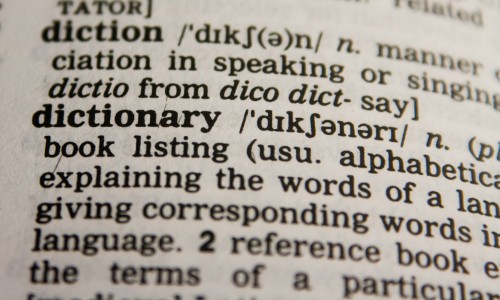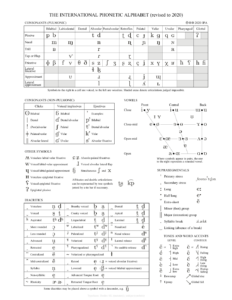 Why is it important to write out pronunciation or write a visual pronouncer?
Why is it important to write out pronunciation or write a visual pronouncer?
When we receive scripts from organizations and companies large and small, there are often certain words with the unfortunate potential to be mispronounced. Employee names, product names, and brand names are categories of such words. Where the person writing the script for the organization or company is intimately familiar with all the proper names, our voice actors (not AI voice) may not have that exposure and familiarity.
So how do we assure our customers that their proper nouns will be pronounced correctly in their voicemail greeting and voiceover recordings?
One way is to ask the scriptwriter to include a visual, written pronouncer for any and all words that could be mispronounced.
But how should a scriptwriter convey correct pronunciation in a visual format?
We’ll address three different methods.
1. Simple Phonetic Writing – Spell it like it sounds!
When thinking about pronouncing incoming student names, the Registrar’s office at Carnegie Mellon University in Pittsburgh, Pennsylvania, provides a PDF called “Phonetic Spelling Instructions”. The instructions ask students to “Indicate either the phonetic spelling of your name OR a familiar word that rhymes with your name.” This is probably the easiest way for a business or organization to enter a visual pronunciation into a document for our team and our Voice Artists to interpret.
Let’s analyze two phonetic spelling examples included in Carnegie Mellon’s PDF:
Raul Gonzalez: rah-OOL gon-SAH-les
When we write visual pronouncers with phonetic spellings for professional voice recordings, the key is for all teams to be on the same page. At Marketing Messages, we’ve engaged each other’s phonetic writing skills, habits, and preferences by taking the same word(s) and asking the entire team to submit a phonetic representation. We can easily use “Raul Gonzalez” as an example. Notice the stressed syllable is written in capital letters and the unstressed syllables are lowercase. If the entire team returns a visual pronouncer like the above, we have reasonable assurance that our Voice Artists will as well.
Sophia Lamagna: so-FEE-uh sounds like “lasagna”
This example uses a combination of phonetics and rhymes to convey the pronunciation of Sophia Lamagna’s name. But to be even more precise, we would have included a phonetic take of Lamagna, as well:
luh-MAHN-yuh
2. Write Out Pronunciation with Diacritical Marks – A Bit More Exact
This method of providing a visual pronouncer for a voicemail greeting requires more effort when typing (but is easy when writing). If you’ve ever looked up a word in a dictionary to find the correct pronunciation, you’ll be familiar with these diacritical marks. This method also lowers the chance of misinterpretation, so long as all involved understand the meaning of each diacritic.
So that we can quickly meet on the same page, the following are examples of common words using the most basic diacritics:
Road: rōd
Blood: blŭd
German: jər’-mən
Passionate: pă’-shə-nət
Notice the use of accents to mark stressed syllables, long and short vowel sounds, and the schwa sound (upside down “e”).
How to insert these accented letters? Use these codes. Or in Windows, pull up the Character Map. In Mac OS, pull up the Character Viewer.
3. International Phonetic Alphabet (IPA) – Most accurate, especially for multi-language, but less-widely understood
 Using the IPA in scripts for auto attendant prompts is the most accurate, fool-proof way to convey pronunciation, second only to a recorded audio pronouncer. But with increased accuracy comes increased learning. The learning curve for IPA is quite high.
Using the IPA in scripts for auto attendant prompts is the most accurate, fool-proof way to convey pronunciation, second only to a recorded audio pronouncer. But with increased accuracy comes increased learning. The learning curve for IPA is quite high.
Click the inline image to enlarge the IPA 2020 revision and prepare to be at least slightly overwhelmed. Unless you’re already a world-class IPA writer, you may want to stick with one of the two easier methods above.
Before finalizing your script for voiceover recordings for voicemail message, and before you write a visual pronouncer, we suggest talking to us. Our Sales team will review your script with you, highlighting any words with the potential to be mispronounced, and develop a visual pronouncer process that makes sense to you, to us, and to our voice talents.

2 responses to “How to Write Out Pronunciation for Professional Audio Recording”